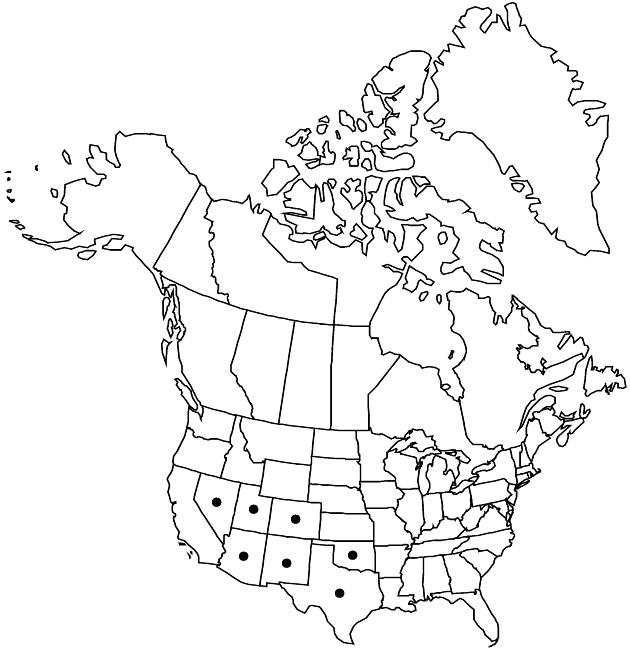Gaillardia pinnatifida
Ann. Lyceum Nat. Hist. New York 2: 214. 1827.
Perennials (sometimes flowering first-year, sometimes rhizomatous), (5–) 15–35+ cm. Leaves basal and cauline, mostly restricted to proximal 1/3–1/2; petiolar bases 0–5+ cm; blades mostly oblanceolate to spatulate, 3–6 (–12) cm × 3–18 (–30) mm, margins mostly pinnatifid, distal sometimes toothed or entire (rarely all linear, entire), faces closely strigillose to shaggily villous. Peduncles (4–) 8–25+ cm. Phyllaries 20–30, ovate to lanceolate-attenuate, 7–12+ mm, hispidulous to villous (hairs often jointed). Receptacular setae usually 1–3 mm, rarely wanting. Ray-florets 0 or 5–14; corollas usually uniformly yellow, sometimes proximally and/or abaxially reddish, 10–25+ mm. Disc-florets (30–) 60–100+; corollas usually proximally ochroleucous or yellow and distally purplish, rarely wholly yellow, tubes 0.8–1 mm, throats campanulate to plumply urceolate, 3–4.5 mm, lobes broadly deltate to deltate-ovate, 0.5–1 mm, jointed hairs 0.3+ mm. Cypselae obpyramidal, 1–3 mm, hairs 1–2 mm, inserted at bases and on angles and faces; pappi of 8–11 lanceolate, aristate scales 3–7 mm (scarious bases 1.5–4 × 0.5–1.5 mm). 2n = 34.
Phenology: Flowering Mar–Oct, mostly May–Jul.
Habitat: Clays or sandy soils, often disturbed places, in grasslands, desert scrub-lands, or pinyon woodlands
Elevation: 900–2000 m
Distribution

Ariz., Colo., Nev., N.Mex., Okla., Tex., Utah, Mexico (Chihuahua), Mexico (Coahuila), Mexico (Durango), Mexico (Sonora)
Discussion
Some plants, especially from Arizona, included here in Gaillardia pinnatifida, have mostly narrow, undivided leaf blades (mostly 3–8+ mm wide, villous to sparsely strigillose; var. linearis) and intergrade with similar plants called G. multiceps, which have sparsely and minutely hispidulous or glabrate leaf blades.
Plants from Utah with yellow disc corollas and densely gland-dotted leaves, included here in Gaillardia pinnatifida, have been recognized as G. flava.
Selected References
None.